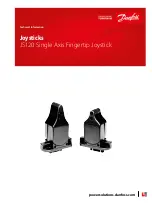
active threshold
An active threshold is a trigger point or reporting threshold for an analog input.
a/d converter
An analog to digital converter converts varying sinusoidal signals from instruments into binary code for a
computer.
address mode
The Sure Cross
®
wireless devices may use one of two types of addressing modes: rotary dial
addressing or extended addressing. In
rotary dial
address mode, the left rotary dial establishes the
network ID (NID) and the right rotary dial sets the device address.
Extended
address mode uses a
security code to "bind" Nodes to a specific Gateway. Bound Nodes can only send and receive
information from the Gateway they are bound to.
antenna
Antennas transmit radio signals by converting radio frequency electrical currents into electromagnetic
waves. Antennas receive the signals by converting the electromagnetic waves back into radio frequency
electrical currents.
attenuation
Attenuation is the radio signal loss occurring as signals travel through the medium. Radio signal
attenuation may also be referred to as free space loss. The higher the frequency, the faster the signal
strength decreases. For example, 2.4 GHz signals attenuate faster than 900 MHz signals.
baseline filter
(M-GAGE)
Under normal conditions, the ambient magnetic field fluctuates. When the magnetic field readings drift
below a threshold setting, the baseline or drift filter uses an algorithm to slowly match the radio device’s
baseline to the ambient magnetic field.
binding (DX80
star networks)
Binding Nodes to a Gateway ensures the Nodes only exchange data with the Gateway they are bound
to. After a Gateway enters binding mode, the Gateway automatically generates and transmits a unique
extended addressing (XADR), or binding, code to all Nodes within range that are also in binding mode.
The extended addressing (binding) code defines the network, and all radios within a network must use
the same code.
After binding your Nodes to the Gateway, make note of the binding code displayed under the
*DVCFG
>
XADR
menu on the Gateway's LCD. Knowing the binding code prevents having to re-bind all Nodes if
the Gateway is ever replaced.
binding
(MultiHop
networks)
Binding MultiHop radios ensures all MultiHop radios within a network communicate only with other
radios within the same network. The MultiHop radio master automatically generates a unique binding
code when the radio master enters binding mode. This code is then transmitted to all radios within range
that are also in binding mode. After a repeater/slave is bound, the repeater/slave radio accepts data only
from the master to which it is bound. The binding code defines the network, and all radios within a
network must use the same binding code.
After binding your MultiHop radios to the master radio, make note of the binding code displayed under
the
*DVCFG
>
-BIND
menu on the LCD. Knowing the binding code prevents having to re-bind all radios
if the master is ever replaced.
binding (serial
data radio
networks)
Binding the serial data radios ensures all radios within a network communicate only with the other radios
within the same network. The serial data radio master automatically generates a unique binding code
when the radio master enters binding mode. This code is transmitted to all radios within range that are
also in binding mode. After a repeater/slave is bound, the repeater/slave radio accepts data only from
the master to which it is bound. The binding code defines the network, and all radios within a network
must use the same binding code.
bit packing i/o
Bit packing uses a single register, or range of contiguous registers, to represent I/O values. This allows
you to read or write multiple I/O values with a single Modbus message.
booster (boost
voltage)
A booster is an electronic circuit that increases a battery-level voltage input (3.6V) to a sensor operating
voltage output (5 to 20 V).
CE
The CE mark on a product or machine establishes its compliance with all relevant European Union (EU)
Directives and the associated safety standards.
change of state
Change of state reporting is a report initiated by the Node when a change to the sensor’s input state is
detected. If the input does not change, nothing is reported to the Gateway.
Sure Cross
®
DXM100-Bx and DXM1000-Bx Wireless Controllers
110
www.bannerengineering.com - Tel: + 1 888 373 6767












































